Episode 133: STS-62 - Two for One Special (USMP-2)
Table of Contents
Space Shuttle Columbia has been packed full of so many experiments you might think there are two different payloads back there.. and you’d be right! Let’s learn about fake-metal dendrites, how to stop the orbiter from glowing, and why the NASA ground crews think Pierre Thuot smells like garbage.
Episode Audio #
Photos #
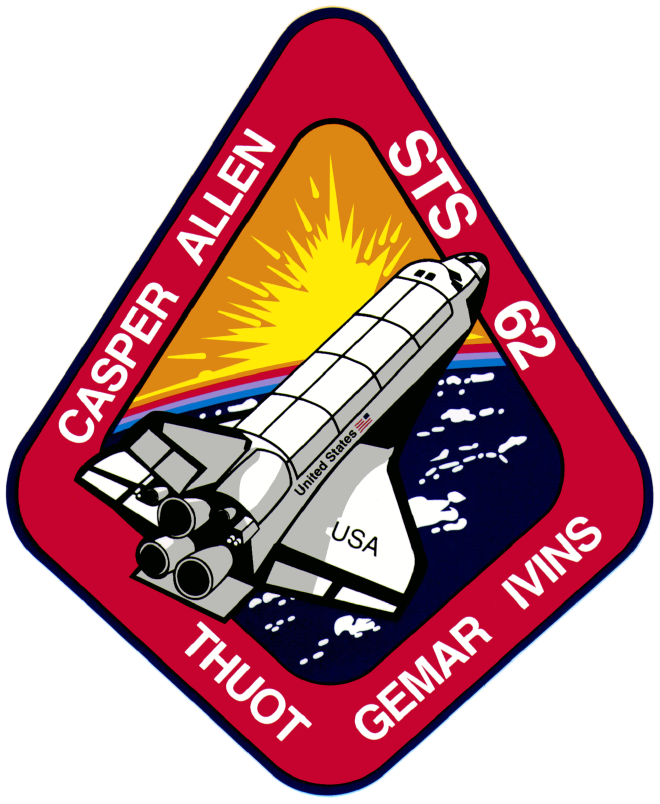
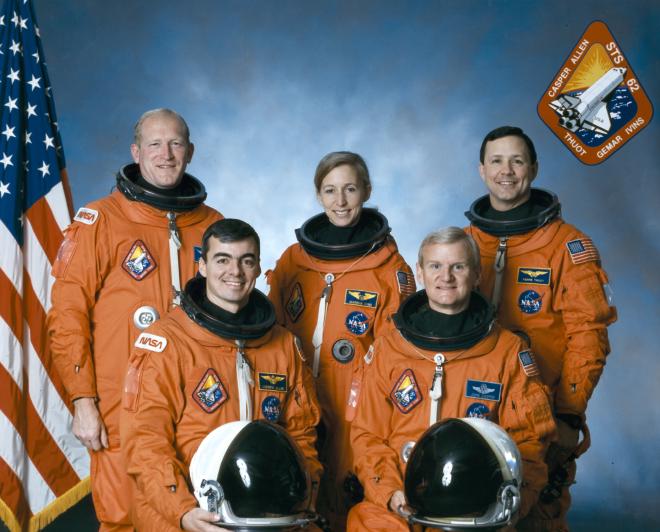
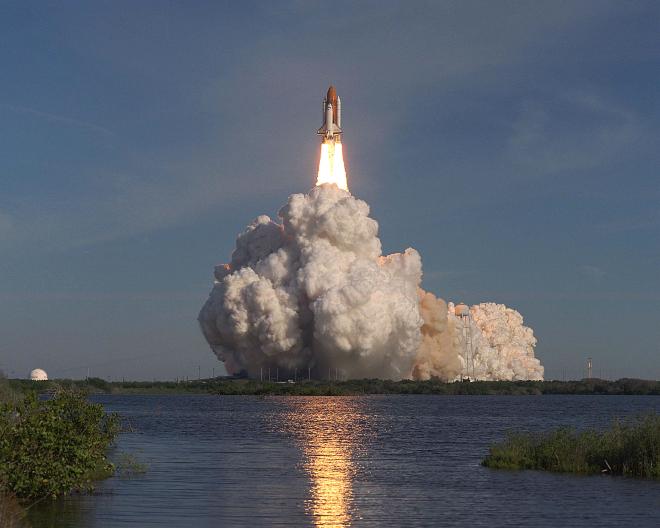
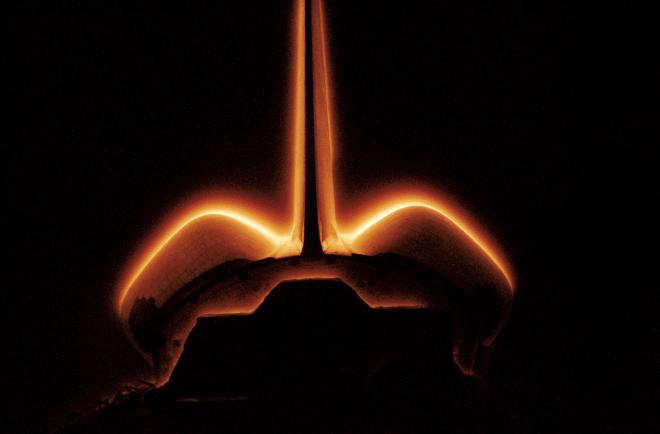
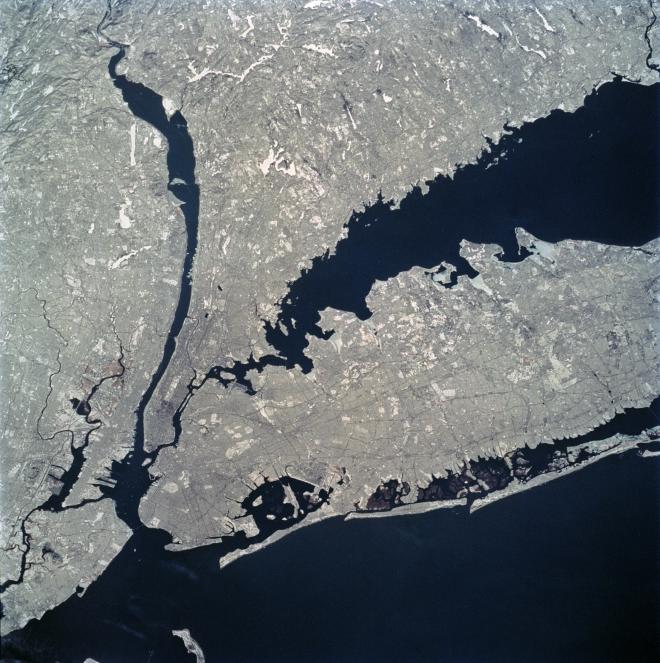
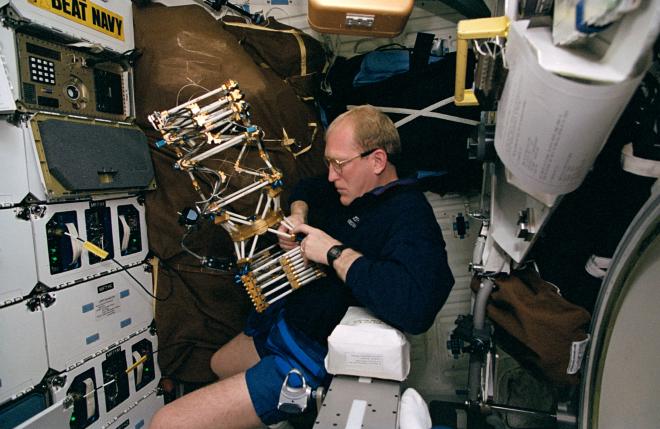
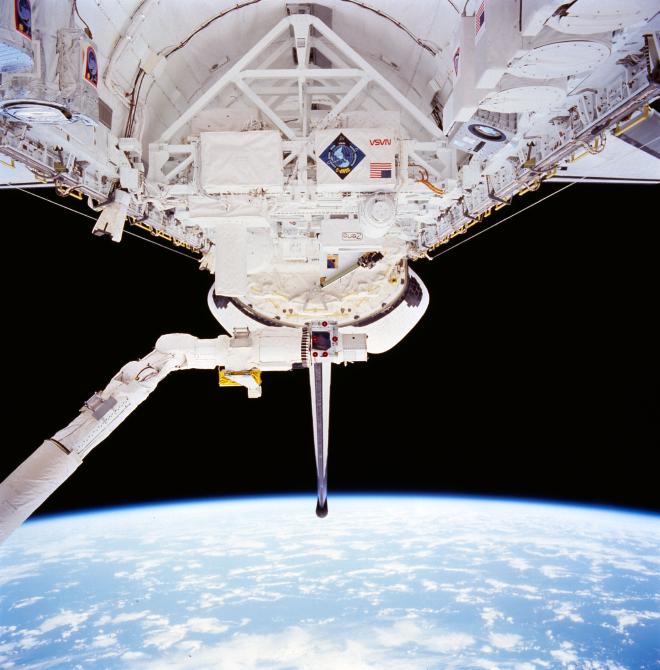
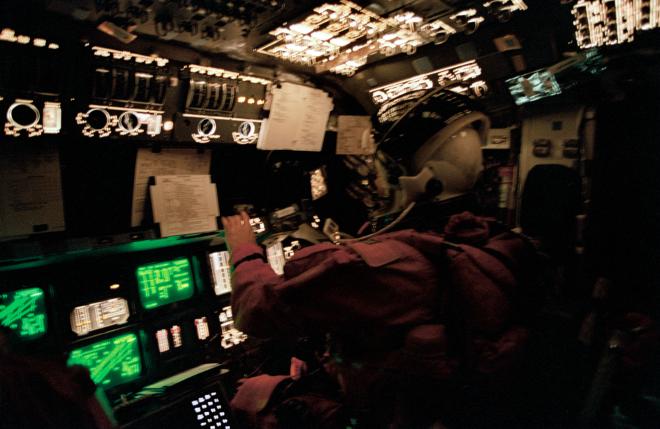
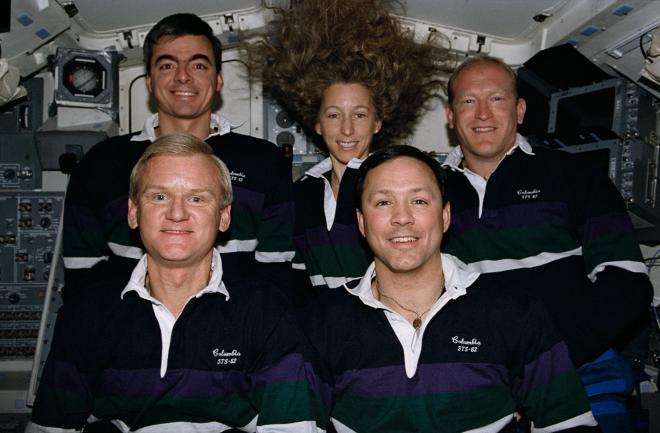
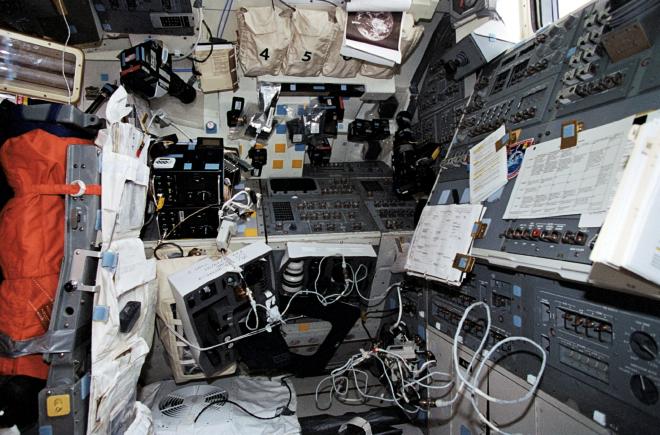
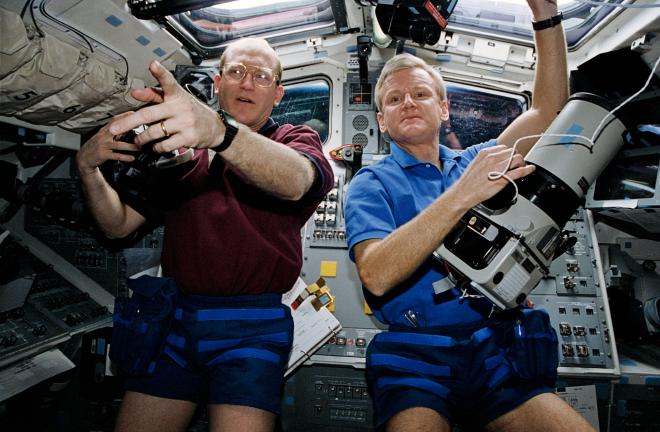
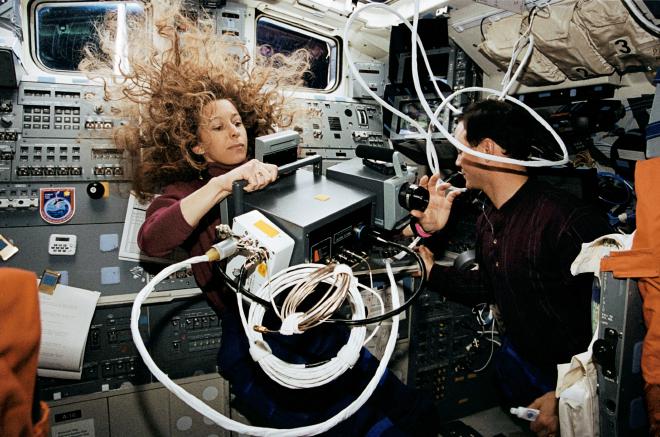
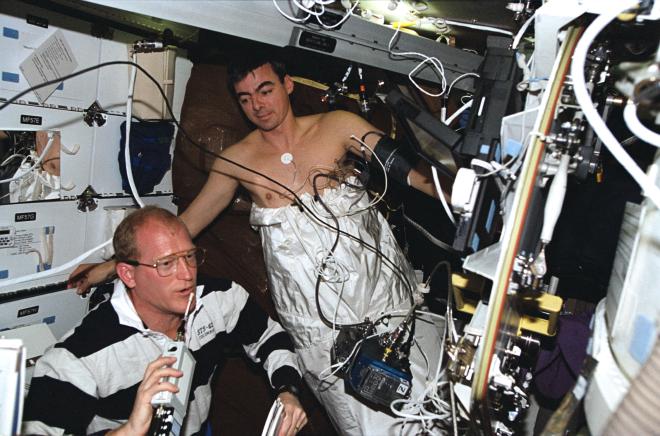
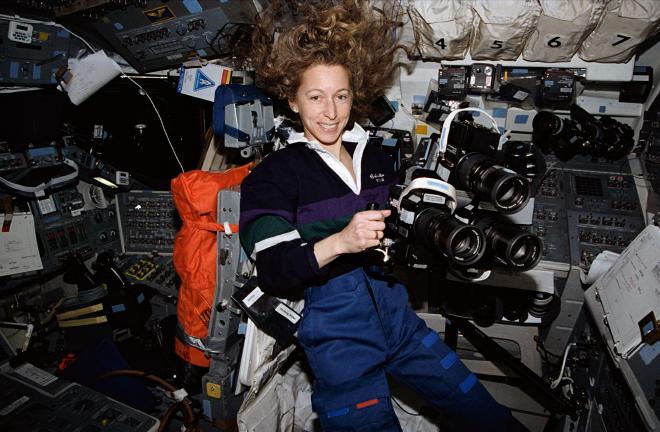
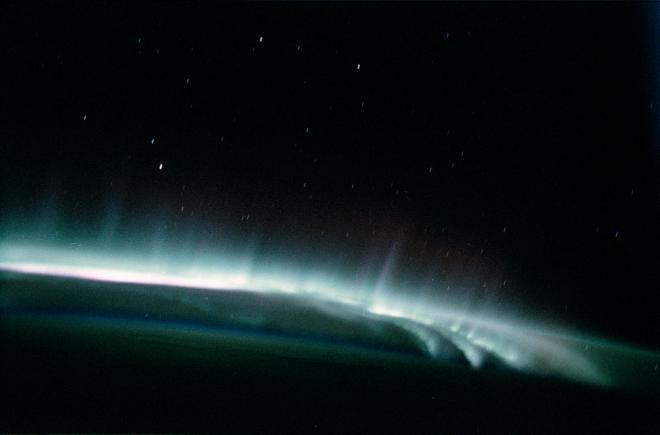
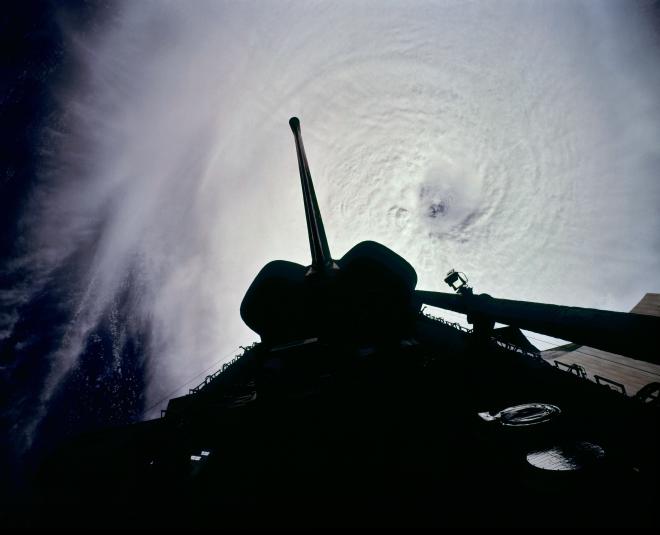
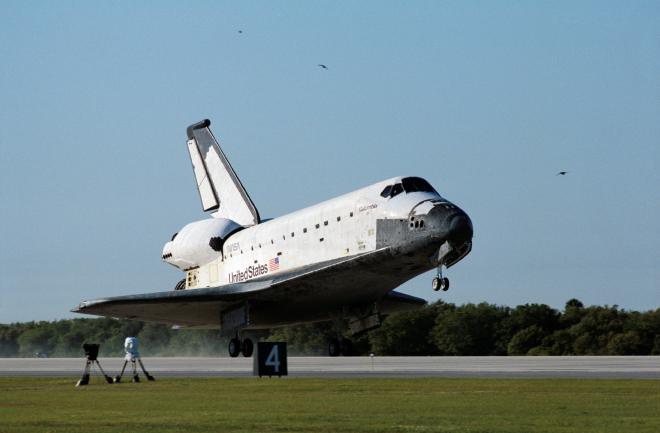
Post-Flight Presentation #
If you’d like to see the mission in motion you can check out the post-flight presentation here:
Transcript #
NOTE: This transcript was made by me just copying and pasting the script that I read to make the podcast. I often tweak the phrasing on the fly and then forget to update the script, so this is not guaranteed to align perfectly with the episode audio, but it should be pretty close. Also, since these are really only intended to be read by myself, I might use some funky punctuation to help remind myself how I want a sentence to flow, so don’t look to these as a grammar reference. If you notice any egregious transcription errors or notes to myself that I neglected to remove, feel free to let me know and I’ll fix it.
Hello, and welcome to The Space Above Us. Episode 135, Space Shuttle Flight 61, STS-62:
Two for One Special
Last time, we talked about the first flight of the Shuttle-Mir program, STS-60. As a first step in this budding working relationship between the US and Russia, Sergei Krikalev became the first Russian to launch on an American spacecraft. We also did some science in Spacehab, performed some unauthorized repairs, and dragged a giant frisbee around low earth orbit.
Today we won’t be dragging anything around in space, and we won’t be flying with any Russians. Instead, we’ve got a payload bay absolutely packed to the brim with material science experiments, investigations into how the space environment and orbiter interact, and fancy new robot arm accessories. There’s so much stuff back there, you might think that there are two entire missions worth of experiments.. and you would be right! Riding in Columbia’s payload bay on this flight is both US Microgravity Payload 2 as well as another batch of experiments from the Office of Aeronautics and Space Technology. And of course, since this is NASA, these were both shortened into initialisms and acronyms. So we’ll be flying with USMP-2 and OAST-2. And if you’re curious, this tendency to make everything into initialisms and acronyms hasn’t gone anywhere. A totally plausible sentence I might say at work these days is: “During AR&D, FDS will send the SV slew file to AGS and they’ll make an AHF and send it back to FDS and RPOGS.” Yeah.. it just sort of happens.
With so many experiments, it’ll be important to have a crew who knows their way around a space shuttle. So it makes sense that for the second time in three flights, we have an entire crew of spaceflight veterans.
Commanding the mission is John Casper, flying for the third time. We most recently saw him commanding STS-54, which deployed TDRS-F, and we’ll see him fly one more time after this.
Joining Casper up front is our pilot for today’s mission: Andy Allen. We last saw Allen helping out with the deployment of the EURECA satellite on STS-46. In fact, when we last mentioned Allen and EURECA in the same sentence together, it was when the spacecraft started moving back towards the orbiter, in the dark, completely out of sight. Allen’s quick thinking prevented a collision, but yikes. I bet Allen doesn’t mind that today’s flight won’t be deploying anything. Especially since the next time he flies, we’ll also have a spacecraft near the orbiter under dubious conditions. Maybe that’s why he decided to call it quits after that.. But let’s not get ahead of ourselves. That’s on his third and final flight, but this is just flight number two.
Moving back in the flight deck, we find our old buddy Pierre Thuot, flying with us once again. We last saw him on the extraordinary spacewalks of STS-49, Endeavour’s first flight. This is Thuot’s third and final flight.
Sitting over to the left is Mission Specialist 2, Charles Gemar, who last flew on STS-48, helping to send the UARS environmental satellite on its way. It’s a shame that I only recently learned how to pronounce Gemar’s last name properly, since this is his third and final flight.
And all alone downstairs, Mission Specialist 3, Marsha Ivins. When we last saw Ivins, she was flying as a mission specialist on STS-46, alongside Andy Allen, helping out with EURECA and the Tethered Satellite System. Like Gemar, it took me three episodes to pronounce Ivins’ last name properly, but at least she still has two flights left. Thanks to the one and only Dan Tani for setting me straight on the pronunciation of both names.
We’ve got almost two weeks of flight time ahead of us, so we better jump right into orbit! Ahhh, but not so fast. The folks on the weather team are frantically waving their hands and are trying to get our attention. It seems that as the scheduled launch date approached, they were pretty darn confident that when the clock hit T-0, the weather would not be suitable for launch. One source I read commented that typically, NASA preferred to just go for it and potentially scrub, even if bad weather was expected. The preference emerged after STS-51L scrubbed early in anticipation of bad weather, only to watch a perfectly clear (and warmer) day come and go. But in this case, the forecasters had been getting more accurate, this particular weather system seemed to be especially straightforward, and calling off the attempt before filling up the external tank would save something like a half a million dollars.. so the launch was scrubbed. This time, it turns out the weather team was right, and NASA saved a big chunk of money and a lot of effort.
One day later, the weather was cooperating, the tank was filled, the crew were awoken and ushered into their spacecraft, and at 8:53 am, with no delays in the countdown, Space Shuttle Columbia lifted off for the 16th time. A little over eight minutes later, when the main engines shut down, and if there was any doubt that they were in fact in orbit, it was set aside when a panel on the middeck came loose from its velcro attachment and was free to float about the cabin.
As I mentioned earlier, this was planned to be an especially long flight. With a whole bunch of USMP experiments, a whole bunch of OAST experiments, and a few extra middeck experiments thrown in, there was a lot to get done. So Columbia was once again outfitted with the Extended Duration Orbiter pallet. This was the hexagonal arrangement of cryogenic tanks, mounted vertically in the very back of the payload bay that we’ve seen a couple of times now. The hydrogen and oxygen inside those tanks were run through the fuel cells, generating electricity to power the orbiter and creating the always-useful byproduct of pure water. Obviously, the crew needed a little oxygen too, but they barely needed any, compared to the orbiter. By the end of the mission, the fuel cells had consumed about 1700 kilograms of oxygen, while the five-person crew used only a paltry 63 kilograms.
With so much to get done, and with EDO on board, the crew wriggled out of their launch and escape suits and settled in for almost two weeks of science.
Except.. the mission was almost cut short right at the very start. Only about two and a half hours into the flight, ground controllers were alarmed to discover that the fuel pump inlet pressure on APU #3 was off-scale-high, over 612 psi. Translating that slightly.. the Auxiliary Power Units are three devices near the back of the orbiter that burn hydrazine and provide power to the orbiter’s hydraulic surfaces, like the elevons on the wings. They’re only used during ascent and reentry, but they’re super duper critically important. Without APUs, the orbiter is uncontrollable in the atmosphere. For that reason, if there is a problem with an APU, the mission has to be cut short. It’s not necessarily a “drop everything and come home immediately” type of emergency, but it’s close.
What ground controllers were seeing was extremely high pressure on one of the fuel lines, which likely indicated that there was a blockage. Thankfully for the crew and for all the scientists counting on this data, the fix was pretty simple. Some heaters were enabled, and after a bit, pressure began to return to normal. The suspected cause of the problem was actually rain that the orbiter had sat through while exposed on the launchpad. Rainwater seems to have gotten in through a small gap in an access panel, and soaked the insulation surrounding this fuel line. Once they were in space, the water froze, which froze the fuel inside the line. Once the water sublimated, helped along by the heater, the fuel plug melted, and everything returned to normal. Though ground controllers were still going to keep a close eye on APU #3 for the remainder of the flight.
Now that we’re safely on orbit and the APU situation has been dealt with, it’s time to get down to science. If you were to look out the aft windows, you would see a whole bunch of experiments mounted to truss structures that spanned the width of the payload bay. Since the first part of the mission focused on USMP-2, we’ll spend the first part of the podcast on it too.
USMP-2, which stands for US Microgravity Payload 2, was the followup to the first USMP mission, which flew on STS-52 a couple of years back. What makes USMP special is that the experiments are mostly operated from the ground, by the science teams who designed them, which NASA called “telescience.” Most of the experiments would run automatically for a few days, with the ground and crew keeping a close eye on them, but then scientists on the ground could react to the results they were already seeing, and tweak the experiments on the fly. Conceptually, it’s as if this mission had a few dozen payload specialists on board. We’ve actually seen most of these experiments before, so I’m just going to lightly touch on a couple that caught my eye.
The Isothermal Dendritic Growth Experiment, or IDGE, is an experiment that’s not as difficult to understand as its name. This may be a foreign concept to any listeners from warmer climates, but those of you who live through cold winters will be familiar with the intricate ice patterns that can sometimes form on exposed glass surfaces, such as windows. As the water crystallizes, these long intricate trees of ice are formed, which look so nice you almost regret taking the ice scraper to them. Well, that phenomenon was essentially what the scientists wanted to study. In fact, the word “dendritic” in the experiment name just comes from the Greek word “dendrite”, meaning tree-like or pertaining to a tree.
Instead of studying water making dendrites on the windshield of my car, scientists wanted to study dendrites in cooling metal, to better understand how the crystalline structure formed. Doing this in space mostly removed gravity from the equation, allowing these delicate structures to grow far more than they would on Earth. Now, you might be wondering how they’ll do this with metal since the last time I checked, metal is opaque. Well, the scientists have you covered. They’re using a transparent material that emulated the properties of metal while still allowing cameras to record what was going on. Pretty clever.
As expected, the dendrites behaved much differently in space than on Earth, and even changed based on the orientation of the spacecraft. When the orbiter was changed to a more stable tail-down gravity gradient orientation, there was an 8-10% difference from earlier in the mission. Neat.
Another experiment that dealt with phase transitions was the Critical Fluid Light Scattering Experiment, which would be studying the critical point of xenon. For this experiment, scientists heated and cooled a sample of xenon until it was a very very very specific temperature. At this temperature, the sample would try to be both a gas and a liquid at the same time, and find itself unable to really commit to either. By shining lasers through the sample and looking for the telltale cloudiness associated with the transition to a liquid, scientists could document when and how the state transition occurred. I wasn’t really sure why anybody would care about forcing a substance to its critical point, but the mission press kit has my back. Among other potential industrial uses, this is apparently how they get the caffeine out of decaf coffee, which really makes me wonder if someone out there is making weird coffee vapor.
By the end of the flight, the team running this experiment from the ground had honed in on xenon’s critical point temperature to within 20 millionths of a degree, an order of magnitude better than had ever been achieved on earth. And here, I think the nickname of the experiment becomes clear. The science team called it “Zeno” which I think is both a nod do the xenon sample, but also to the philosopher who presented the paradox of an arrow approaching a target. Before it can hit the target, it must reach the halfway point to the target, and then it must reach the new halfway point, and then the new halfway point, and never actually hit it. Well, just like with the arrow, you eventually get to a point that’s good enough. So while a range of 20 millionths of a degree of uncertainty is not zero, scientists were able to unlock further mysteries of how matter behaves.
The principal investigator for the experiment was clearly delighted with the results. He said: The sample was doing absolutely marvelous things that I spent my career waiting to see. No number of computers or mathematicians, at this time, could have told us what we saw, and that was truly the high point of doing the experiment. What we got is the region where no one had ever actually looked at how nature behaved… It was a dream realized
There are a bunch of other USMP experiments that I’m going to skip over, but suffice it to say that the first nine days of the flight went nice and smoothly and made a whole bunch of earthbound scientists very happy. After those first nine days, USMP shut down and we hit a nice little transition point. The crew had each taken half a day off earlier in the mission at varying points, but on flight day ten, they all took a half day off together. So before we move on to the OAST experiments, let’s hang out with the crew a bit and catch a little slice of life onboard Space Shuttle Columbia.
Ever since the Gemini days, mission control has been waking crews up by piping music through their radios. I can’t imagine the audio quality on the orbiter’s speakers were great, but mission control always put effort into picking music and wakeup messages that would have some significance to the crew. Just to give you an example, after their first sleep period on orbit, the crew awoke to “I Got You” by James Brown, which if you heard it you’d say “Oh! That’s that I feel good, I knew that I would song”. Later, we got the song “Picky, Picky Head” which I had never heard of, but is from the movie Cool Runnings, which I had heard of. Apparently Commander Casper’s kids were big fans of the film. And of course, since several branches of the military were being represented, various service branch anthems caught a ride via TDRSS to the crew’s ears. We also got “Takin’ Care of Business” by Bachman-Turner Overdrive, and Be Our Guest, from Disney’s Beauty and the Beast, another favorite of Commander Casper’s kids.
So what did mission control wake the crew up with on their half-day off? Actually nothing, since the crew beat them to it! They beamed Surfin’ USA by the Beach Boys down to Houston. Not to be outdone, mission control responded with their own Beach Boys song: I Get Around. Isn’t space fun?
The crew’s post-flight presentation gave another window into what day to day life was like. Here’s a question that might not have occurred to you.. how do astronauts season their food with salt and pepper? Clearly a shaker wouldn’t work, since particles of salt and pepper would just get all over the place, including into peoples’ eyes and into experiments. The solution? Well.. put it in a solution! The crew had little squirt bottles with solutions of salt and pepper in water. That way they could apply a few drops right on top of their food, without making a big mess. Pretty clever.
During their time off, the crew enjoyed the view out the window, filming some spectacular views of the United States during several daylight passes. They even flew directly over Houston. They mentioned that they tried to find the Great wall of China, supposedly visible from orbit, but were unsuccessful.
Something they were successful at, if you’re feeling generous, was claiming another space first. Space nerds are all about noting various records. First human in space, first EVA, first rendezvous, first person to set foot on the moon.. well, the crew of STS-62 were claiming “first bungee jumping” in space. They took a piece of exercise equipment that was basically an over-sized rubber band, tied one end to something solid, tied the other end to themselves, and gently jumped off the wall.. only to be pulled back where they came from. Something tells me that won’t be recorded next to Yuri Gagarin’s flight any time soon, but it might be helpful for trivia night.
OK, well, that was fun, but the crew’s half-day off is done and we have more work to do. So let’s move on to the second major set of experiments we’ll be discussing today: OAST-2. OAST stands for the Office of Aeronautics and Space Technology, which sponsored OAST-1 all the way back on STS-41D in 1984. Since then, the office has changed their name to the Office of Advanced Concepts and Technology, but I guess nobody wanted to bother changing the acronym, because here we are with OAST-2. Where USMP was focused on using the microgravity environment to grow extra pure crystals or reveal phenomena that don’t happen on Earth, OAST is looking to study how things are affected by the space environment. It wasn’t quite this clear cut, but I think of USMP as the science half and OAST as the engineering half. Again, so we don’t get too bogged down, I’m just going to touch on a few of these that I thought were particularly interesting. I don’t think you need to hear how SSBUV is flying for the sixth time. Though just so you know, SSBUV is flying for the sixth time.
First is MODE, which is a dubious acronym that stands for Microgravity 0-Gravity Dynamics Experiment. See, they made the zero into an O. So clever, these NASA folks. We’ve actually seen MODE before, flying on STS-48. This is the experiment where they essentially built a tiny version of a truss design being considered for use on the space station. By putting it through a bunch of different configurations and carefully vibrating it with precise equipment, engineers could learn how much larger versions would move when loaded with crew and modules and spacecraft and whatever. Charles Gemar took lead on this, presumably since he worked with it last time. He apparently took special care to make sure that nothing disturbed the experiment on the crowded middeck by setting up a police-tape-like no go zone. Results from this flight aligned almost perfectly with the previous flight, which was a great indication that the data could be counted on. And I know I always harp on this, but I did have to smile when it was proudly stated that the mission returned a whole nine gigabytes of data. Wowww
Another experiment was taking another crack at an old favorite: orbiter glow. As we now know, interactions between the shuttle and the thin upper atmosphere can create an eerie and beautiful glow on the skin of the orbiter. As the shuttle runs over these hapless atoms at upwards of 28,000 kilometers per hour, a lot of energy gets exchanged, electrons get jostled around, and photons are made, creating light. The goal was to see how this glow was affected by putting the orbiter into different orientations and flying it at different altitudes. Columbia’s orbit was lowered several times once USMP was wrapped up, eventually ending up in a 260 by 195 kilometer orbit. That’s pretty darn low. In fact, it was the lowest of the entire shuttle program to that date. I’m not sure if the record will hold for the remaining flights but I wouldn’t be surprised. The crew members said the ground swept by noticeably faster at this low altitude.
One surprise from this experiment came when nitrogen gas was emitted from a canister in the payload bay in an attempt to further enhance the glow. Instead, the glow stopped! Why? I’m just gonna be straight with you here and say that I remember reading an answer that certainly sounds plausible but I just cannot find where I first saw it, so take it for what it is. The orbiter glowed when it hit the air because it was going super fast and the air was just sort of sitting there. But when nitrogen was released from the shuttle, it was traveling at the same speed! So my guess would be that the atmosphere collided with this little cloud of nitrogen, instead of the orbiter, and away goes your fancy glow.
We’ve got one last engineering test to touch on in the form of the Dexterous End Effector. This is pretty neat little piece of tech that as far as I know never really made it to the operational phase, but really has a lot of potential. The Dexterous End Effector, or DEE, was a potential upgrade for the end effector on the tip of the remote manipulator system, aka Canadarm. The existing end effector was sort of an empty bucket with some wires around the edges. The end effector worked in concert with grapple fixtures on cargo and spacecraft. The grapple fixture was sort of like a big 25 centimeter long nail, just a pin and a flat head. When the bucket of the end effector was placed over the nail of the grapple fixture, wires were cinched around the fixture, locking it into place. It’s a pretty clever and simple little system, but it has some drawbacks. It means that anything you want to grapple needs to have this pin sticking out on it. That’s not always a big deal, but when you’re trying to stuff something into a rocket payload fairing, volume can be at a premium. But also, the end effector didn’t give the operators any feedback on how the grappled object was trying to move around. Put another way, it didn’t have a sense of touch.
Since we’re still in the early days before International Space Station hardware would start flying, we’re still trying out some new ideas for how to put this thing together. An anticipated task on the station would be to connect large pieces of structure together with pins and bolts and such. The current plan would be to just send some spacewalking astronauts out to do it, but even though we haven’t hit any major snags, spacewalking is still pretty dangerous and should be minimized. If even some of the structure could be assembled using robot arms operated from inside the station, or maybe even from the ground, it would be a lot less risky and potentially free up precious time on orbit. But in order to do this, the arm would have to support extremely high precision operations, and ideally would give some sort of useful feedback to the operator so they don’t blindly plow through an antenna or bend a bolt or something without realizing.
The Dexterous End Effector hoped to solve these problems by replacing the bucket and wire system of the current end effector with a powerful electromagnet, capable of holding onto objects using 1500 kilograms of magnetic force. This came with a few pretty sizable benefits. First was that DEE was simpler and likely safer. The current end effector is a clever bit of engineering, but with so many moving parts, there were plenty of places for something to go wrong. And it was also possible for something to go wrong while a heavy load was grappled on it. That could result in having to jettison the entire arm, or could even pose a danger to the orbiter if it happened at a critical time. With an electromagnet, you just turn off the power, and the thing will drift away.
Second, it meant that instead of a 25 centimeter long grapple fixture sticking out, potential targets just needed a small metal plate where the magnet could snap on. This would weigh less and take up less volume.
And third, the magnet came with force and torque sensors that indicated which way the grappled load was trying to move. The astronauts couldn’t literally feel the force, but they could see the forces displayed on a screen, which clearly indicated if they were in a benign situation, or driving right into something.
The crew put the new system, which also came with fancy new alignment sensors, through its paces, moving objects around, and attempting assembly-like tasks only using the arm’s camera. This was especially important since assembly tasks might be required in locations where astronauts didn’t have direct line of sight. Several crew members took turns with it, and were able to assemble test articles with an accuracy as tight as 1.5 millimeters. Hey, they could almost build a reflective null corrector!
Again, given that I haven’t heard of anything like this electromagnetic end effector being used on the ISS these days, I’m not sure this idea went anywhere, but that’s fine. Good ideas like this have a way of reemerging years, even decades later, and provide a huge head start to the people who are picking it back up. So maybe someday.
Even long duration missions come to a close eventually. The pilot crew practiced up on the shuttle landing simulator, those who were participating took their last stints in the lower body negative pressure device, and everyone suited up for the ride home. With the duration of this flight coming so close to the shuttle record, I’m sure the entire crew was hoping for a little bit of that unruly Florida weather, but for once it actually cooperated, and Columbia soared through an uneventful reentry. Right after wheels stop, APU 3 was shut down just in case the earlier high pressure problem had resulted in a hydrazine leak. It was pretty unlikely, but better safe than sorry. The flight lasted 13 days, 23 hours, 16 minutes, and 41 seconds, less than an hour short of the record, which did not slip the attention of mission commander Casper. In fact, one source I read had a bizarre story about the crew sending video down to Earth and including a quote-unquote subliminal message to Lead Flight Director Wayne Hale. Apparently, if Wayne decided to leave them in space a little longer, there was a crisp one-million-dollar check in it for him. Alas, Wayne Hale could not be swayed. Ah well, maybe next time, folks.
I think to a lot of people, this would be considered a forgettable flight. Yeah, a lot of useful science experiments and engineering tests were completed, but somehow that doesn’t quite hold the attention like the big flashy flights. But I think it’s worth remembering that the less memorable flights are no less risky for the crews. I’ve often wondered why people ever quit being astronauts, but as we learned in the Tani interview, it can be pretty draining to a crew member and their family. I think we gain a glimpse into this struggle from an interview Andy Allen gave for the Smithsonian book “Space Shuttle: The First 20 Years”. This quote is two paragraphs long but it really stopped and made me think so I’m just going to read the whole thing:
The worst thing about flying in space is saying goodbye to your kids. My process in the quarantine period before launch was to get my will all squared away and write notes and letters to my kids. In case of my death, here are all the instructions, here’s what you need to do. It really gets sad, so I had at least one boo-hoo kind of evening before each of my flights. On each flight I also did something special for the kids. In case I didn’t come back they would have something, whether a cassette recording or a letter or a recording of songs.
Having been in the Marine Corps and been on aircraft carriers and had gazillions of close calls as a fighter pilot, nothing is as stretched out as getting ready for a spaceflight. The whole emotional part of it was surprising to me - I wasn’t expecting it. Partly it was because my kids, at least the oldest one, were at an age where they understood what was going on. Daddy might blow up, and he might not come back.
I included that quote because I think that among space enthusiasts there is a tendency to think of becoming an astronaut as this ultimate dream job, and not really thinking about any downsides. And look, I certainly wouldn’t turn down the offer to fly. But I think it’s important to remember that these are real people who are dedicating real years of their lives and taking on real risks to help further humanity. Quotes like Allen’s make the whole space program feel more three dimensional and really drive home how much everyone involved believes in the mission. That despite all of that, it’s still worth it.
OK, that was a nice thought-provoking moment and all, but I can’t leave you on such a downer note. So here’s another quote from an STS-62 crew member, albeit after a different flight. Pierre Thuot, in an interview for the same Smithsonian book said:
The rinseless soap and rinseless shampoo we use on the shuttle actually does a super job of getting you clean. Each of us took a bath everyday in orbit, at least I did. So I didn’t notice any odors or anything when we were in space. But when we landed at Edwards Air Force Base in California, the NASA guys came up to open the hatch. They equalize the pressure first, and when they do that, instead of the air just equalizing, it rushes out. It’s sucking all this smelly air out of the wet trash area underneath the deck, and it got really ripe. It smelled like you were standing in a garbage pile. I’m sure they thought it was us, but really it was the garbage.
OK Pierre. Whatever you say.
Next time, get your fedora and whip ready, because we’re hunting for ancient lost cities. But don’t worry about snakes, we’ll still be a few hundred kilometers up.
Ad Astra, catch you on the next pass
